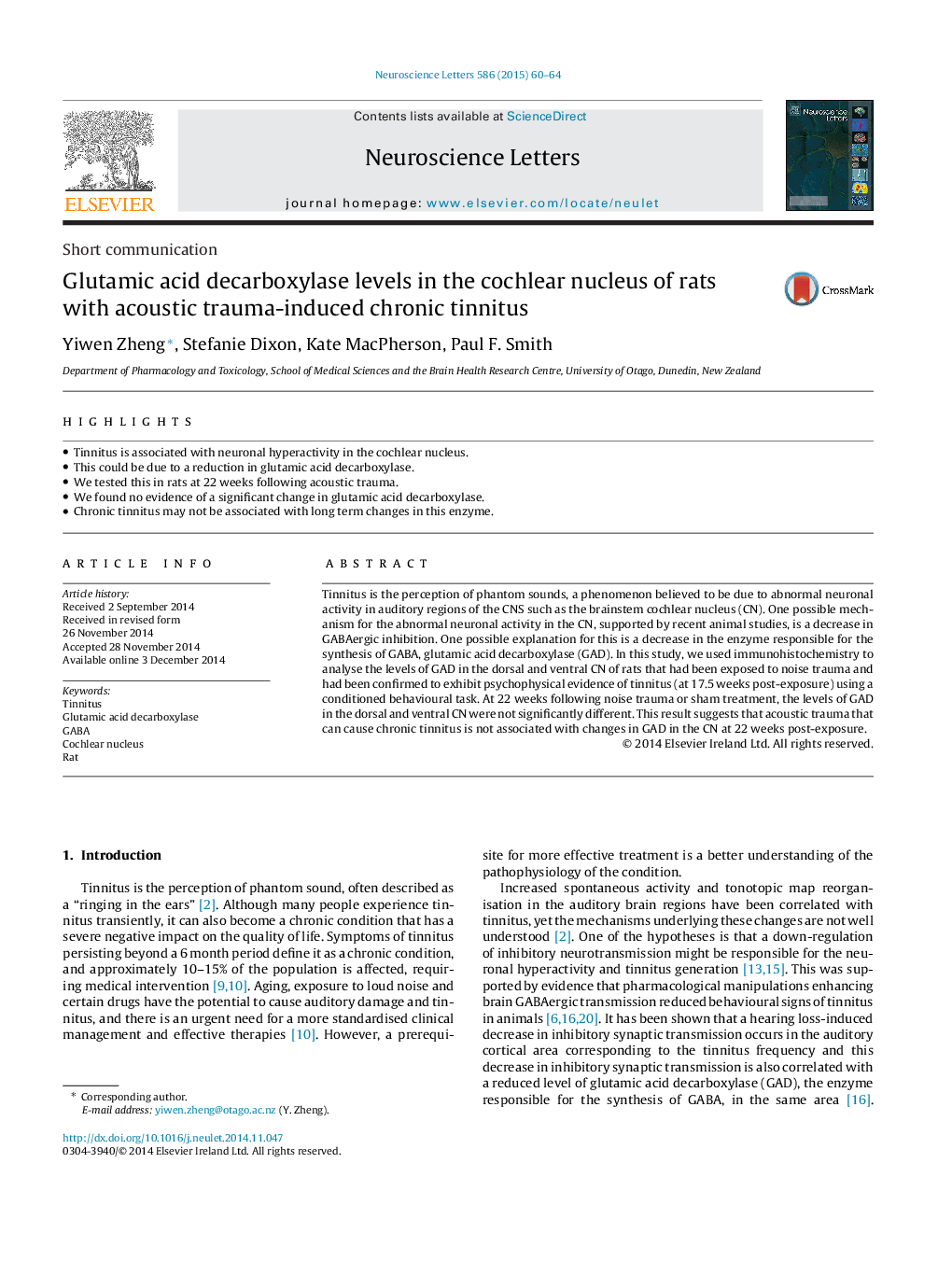| Article ID | Journal | Published Year | Pages | File Type |
|---|---|---|---|---|
| 4343596 | Neuroscience Letters | 2015 | 5 Pages |
•Tinnitus is associated with neuronal hyperactivity in the cochlear nucleus.•This could be due to a reduction in glutamic acid decarboxylase.•We tested this in rats at 22 weeks following acoustic trauma.•We found no evidence of a significant change in glutamic acid decarboxylase.•Chronic tinnitus may not be associated with long term changes in this enzyme.
Tinnitus is the perception of phantom sounds, a phenomenon believed to be due to abnormal neuronal activity in auditory regions of the CNS such as the brainstem cochlear nucleus (CN). One possible mechanism for the abnormal neuronal activity in the CN, supported by recent animal studies, is a decrease in GABAergic inhibition. One possible explanation for this is a decrease in the enzyme responsible for the synthesis of GABA, glutamic acid decarboxylase (GAD). In this study, we used immunohistochemistry to analyse the levels of GAD in the dorsal and ventral CN of rats that had been exposed to noise trauma and had been confirmed to exhibit psychophysical evidence of tinnitus (at 17.5 weeks post-exposure) using a conditioned behavioural task. At 22 weeks following noise trauma or sham treatment, the levels of GAD in the dorsal and ventral CN were not significantly different. This result suggests that acoustic trauma that can cause chronic tinnitus is not associated with changes in GAD in the CN at 22 weeks post-exposure.
